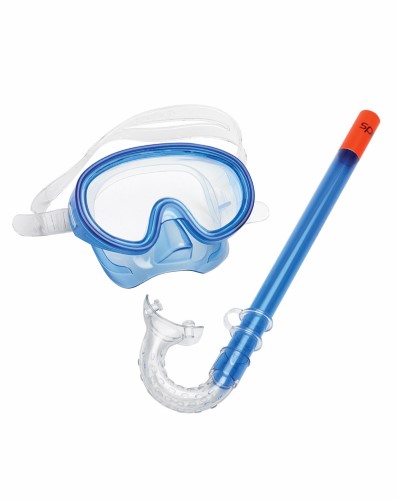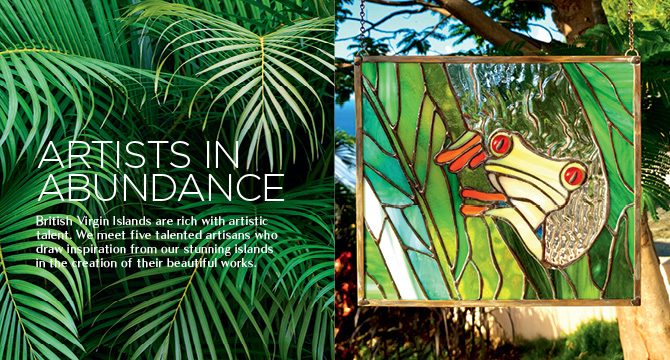[ts_fab]
A Tourist in My Own Town – The Beginning of Something New
Photography courtesy of Sail Caribbean Divers
There is great shame in the following confession – shame that is only forgivable with my current enthusiasm…
Relocating from London, I’ve lived in the BVI for four years, reaching five by November. It would be assumed that I’ve experienced most of the BVI’s unique opportunities – visited all the beaches, sailed to all the islands, snorkelled in all the hotspots, and dived in the famous locations…
I haven’t.
In fact, I haven’t spent nearly sufficient time to say I’ve enjoyed the attractions that make the BVI the renowned vacation haven it has become.
[one_half_last]When expats arrive in the BVI, the usual protocol is pursuit of these island-specific activities, following their curiosity and desire to relish the new adventures on offer. The point is, when you come from a colder climate where your rivers and oceans are likely to leave you with a debilitating illness from full immersion, it is wise to take advantage of a tropical Caribbean environment and everything that comes with that.
With summer being a quieter period, this is the ideal time to embark on this mission and so I recently opted to join Sail Caribbean Divers to observe a diving excursion and get in a little snorkelling—residents reading this will quite rightly think “big deal”, but this would be my second time snorkelling – I reiterate my admission of shame.[/one_half_last]
As we dropped anchor at our destination, I was soaked in the enticing enthusiasm of the divers as they suited up, listened to the briefing from the Sail Caribbean Divers instructor, and then jumped into the water. A boat full of energised, fervent conversation became a lowly, solitary vessel at sea.
With a plethora of bubbles floating up to the surface where the divers were enjoying fantastical sights down below – things I’ve only seen in amazing photography and video – I couldn’t help but think of the sea creatures underneath. I look at a lobster and I’m transported to dining in a pleasant restaurant, but simultaneously, I also see great inspiration for an award-winning alien film. Diving also conjures images of ‘that scene’ with Samuel L Jackson in 1999 Sci-Fi horror Deep Blue Sea. This apprehension is incapacitating and is probably the single ridiculous reason why I’ve been missing out on a visually stunning world worthy of exploration.
[one_half]It was with mild trepidation, that I made my ‘sorry’ jump into the water to do a little snorkelling—my second time ever in over four years—and what incredible sights. Of course, it was a spec on what the divers had seen down below. When they returned, the boat reanimated with jokes and laughter from the visuals down under and I was infected further with eagerness to dive. To boost my desire, I interviewed Course Director Mike Rowe of Sail Caribbean Divers. Mike explained that films and TV have not been the most positive PR for the ocean.
“Sea animals and fish are frequently the victims of negative publicity…” he said. “Marine animal behaviour can appear threatening to divers who do not understand the purpose behind the behaviour. Many sea animals are completely docile but just look scary. As I tell new divers, don’t try to pull eels out of their holes, poke the lobsters, or…ride the stingrays.”[/one_half]
[one_half_last]
[/one_half_last]
Another aspect that caught my interest was the difference between day and night dives to which Mike explained:
“Night dives can be some of the most unusual and beautiful dives you will ever experience. The biggest difference between day and night diving is at night you only see what your light illuminates…your dive light focuses your attention in a small area and encourages you to see things you would have otherwise missed. You may overlook the shrimp on the gorgonian during the day since you may be overwhelmed with the expansive reef, but at night you focus on a smaller part of the reef…at night your dive light brings reds and oranges to the party, and colours at night seem much more vivid. Then there are the nocturnal creatures, basket stars open up and feed only at night, as do many corals. Octopi leave the safety of their dens to hunt at night along with eels, certain fish, and a multitude of lobster.”
Overall, I think Mike’s conclusion highlights one of the most attractive aspects about diving, quoting Sir David Attenborough, the famed English broadcaster and Naturalist: “’I can mention many moments that were unforgettable and revelatory,’ he says. ‘But the most single revelatory three minutes was the first time I put on scuba gear and dived on a coral reef. It’s just the unbelievable fact that you can move in three dimensions. That minute, when you suddenly move your weight, do that with your fin and know you’re going to move off. Suddenly, there are all these extraordinary creatures – wonderful shrimps or shoals of triggerfish or the looming shape of a shark. It’s an individual communion. That’s really revelatory and it’s part of our world.’”
The following are three popular snorkel sites in the BVI from Sail Caribbean Divers – here, it is expected that you’ll see incredible underwater displays and serves as inspiration for diving:
3 Popular Snorkel Sites in the BVI from Sail Caribbean Divers
SALT ISLAND
Stern section of RMS Rhone – Southern end, near Black Rock
COOPER ISLAND
Cistern Point – West of Manchioneel Bay (Francis Drake Channel side)
NORMAN ISLAND (Inspired ‘Treasure Island’ by Robert Louis Stevenson)
The Caves – Treasure Point
More BVI Diving locations in the BVI Dive map










